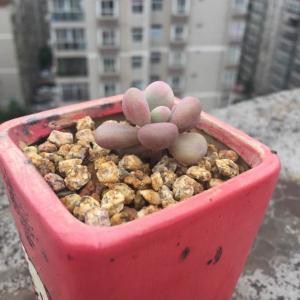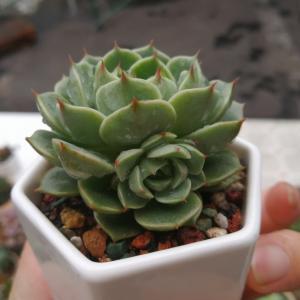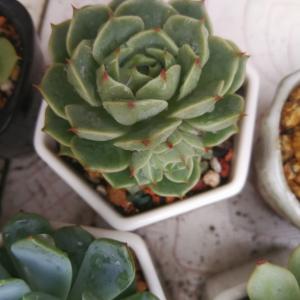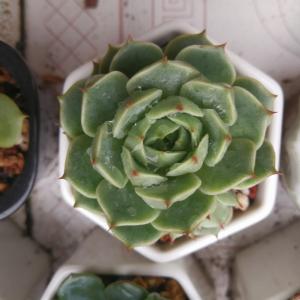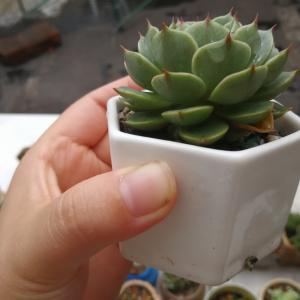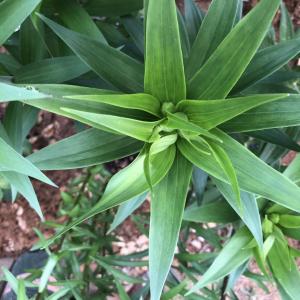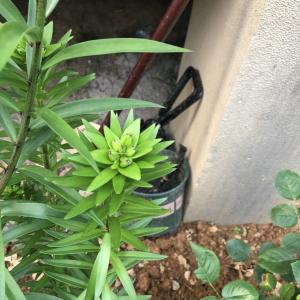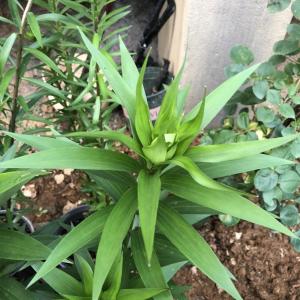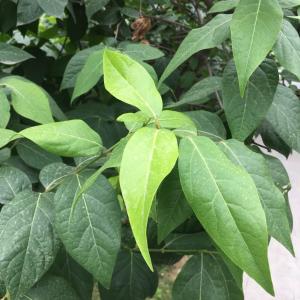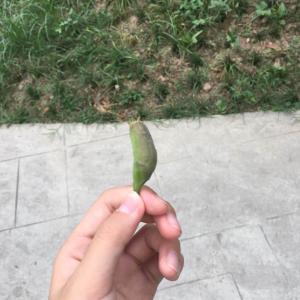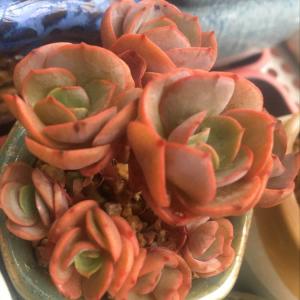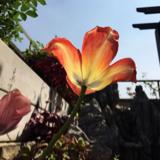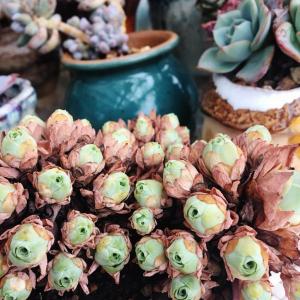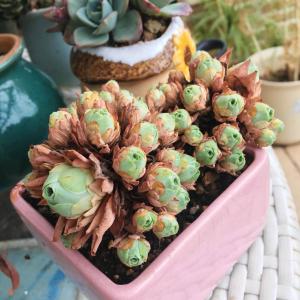文章
Miss Chen
2018年05月20日

Description: This perennial wildflower is ½–2' tall. At the base of each plant, there is a small rosette of basal leaves spanning about 6-8" across. The blades of the basal leaves are typically 2-3" long and 2" across; they are cordate-orbicular to cordate-oval in shape, crenate-dentate along their margins, and hairless. The slender petioles of the basal leaves are as long as the blades. A flowering stalk develops from the center of each rosette. Along this stalk, there are usually 2-3 alternate leaves. The alternate leaves are smaller in size than the basal leaves and pinnatifid in shape. Both the alternate leaves and the stalk are hairless during the blooming period and thereafter. The stalk terminates in a flat-headed panicle (or corymb) of flowerheads. The branches of this panicle are slender and hairless. Each daisy-like flowerhead is ½–¾" across; in the center there are numerous golden yellow disk florets, which are surrounded by 6-16 yellow ray florets. Both the disk and ray florets are fertile. Surrounding the base of the flowerhead, there are numerous linear green bracts in a single series. The blooming period occurs from mid- to late spring and lasts about 3 weeks. Each floret is replaced by a bullet-shaped achene with a small tuft of white hairs. The achenes are distributed by the wind. The short rootstock has spreading fibrous roots and it produces rhizomes (or stolons). Vegetative colonies of plants are often produced in favorable habitats.
Cultivation: The preference is full sun to light shade, wet to mesic conditions, and soil with abundant organic matter to retain moisture. Plants that grow in sunlight require more moisture than plants growing in shade.
Range & Habitat: Golden Ragwort is occasional throughout Illinois (see Distribution Map), where it is native. Habitats include wet to mesic deciduous woodlands, damp woodland openings, woodland borders, moist sandy savannas, sandy swamps, seeps and edges of springs, banks of rivers and lakes, slopes of rocky ravines, glades, moist meadows, roadside embankments, and abandoned fields. Golden Ragwort is more shade-tolerant than many other ragworts (Packera spp.) in the state.
Faunal Associations: The nectar and pollen of the flowers attract small bees and flies primarily. Among the bees, are such visitors as little carpenter bees (Ceratina spp.), cuckoo bees (Nomada spp.), and various Halictid bees. Among the flies, are such visitors as Syrphid flies, Tachinid flies, and miscellaneous others. The caterpillars of a moth, Orthonama obstipata (The Gem), feed on ragworts (Packera spp.). The foliage is shunned by most mammalian herbivores because of its toxicity, although sheep are more tolerant and will eat it.

Photographic Location: An opening in a sandy swamp at the Irwin Prairie State Nature Preserve in NW Ohio.
Comments: Goldenrod Ragwort (Packera aurea) is an attractive spring wildflower. In Illinois, the perennial Packera spp. (Ragworts) differ from each other by the shape of their basal leaves. Among these, Golden Ragwort has the most orbicular basal leaves; each basal blade is slightly to strongly indented at the base where it is joined by the petiole. Other perennial Ragworts have more slender basal leaves that are usually oval to elliptic in shape. One of them, Packera plattensis (Prairie Ragwort), has conspicuous hairs on its leaves and stems, while mature plants of Golden Ragwort are hairless. A scientific synonym of Golden Ragwort is Senecio aureus, and it is sometimes referred to as 'Heart-Leaved Ragwort' or 'Heart-Leaved Groundsel.'
Cultivation: The preference is full sun to light shade, wet to mesic conditions, and soil with abundant organic matter to retain moisture. Plants that grow in sunlight require more moisture than plants growing in shade.
Range & Habitat: Golden Ragwort is occasional throughout Illinois (see Distribution Map), where it is native. Habitats include wet to mesic deciduous woodlands, damp woodland openings, woodland borders, moist sandy savannas, sandy swamps, seeps and edges of springs, banks of rivers and lakes, slopes of rocky ravines, glades, moist meadows, roadside embankments, and abandoned fields. Golden Ragwort is more shade-tolerant than many other ragworts (Packera spp.) in the state.
Faunal Associations: The nectar and pollen of the flowers attract small bees and flies primarily. Among the bees, are such visitors as little carpenter bees (Ceratina spp.), cuckoo bees (Nomada spp.), and various Halictid bees. Among the flies, are such visitors as Syrphid flies, Tachinid flies, and miscellaneous others. The caterpillars of a moth, Orthonama obstipata (The Gem), feed on ragworts (Packera spp.). The foliage is shunned by most mammalian herbivores because of its toxicity, although sheep are more tolerant and will eat it.

Photographic Location: An opening in a sandy swamp at the Irwin Prairie State Nature Preserve in NW Ohio.
Comments: Goldenrod Ragwort (Packera aurea) is an attractive spring wildflower. In Illinois, the perennial Packera spp. (Ragworts) differ from each other by the shape of their basal leaves. Among these, Golden Ragwort has the most orbicular basal leaves; each basal blade is slightly to strongly indented at the base where it is joined by the petiole. Other perennial Ragworts have more slender basal leaves that are usually oval to elliptic in shape. One of them, Packera plattensis (Prairie Ragwort), has conspicuous hairs on its leaves and stems, while mature plants of Golden Ragwort are hairless. A scientific synonym of Golden Ragwort is Senecio aureus, and it is sometimes referred to as 'Heart-Leaved Ragwort' or 'Heart-Leaved Groundsel.'
0
0
文章
权问薇
2018年05月20日


一、养殖环境
1、土壤:要使用排水性良好的沙质土壤,尽可能不要使用黏重、透气性不好的土壤。
2、温度:夏季温度控制在18-22℃最佳,冬季朱顶红处于休眠的状态,温度不要低于5℃。
3、光照:朱顶红喜欢在阳光充足的环境生长,不能长时间接受阳光直晒,最好是将它放在通风好、明亮且没有强光直射的窗口。
4、浇水:浇水的时候要透彻,浇水量不要过多,以免出现积水影响其生长。

二、繁殖方法
1、播种繁殖:种子成熟之后就可以播种,一般在18-20℃发芽比较快,幼苗在移栽的时候要小心,不要伤害到根部,播种留经二次移植后就可以装进小盆了。
2、扦插繁殖:将它的母球纵切成很多份,然后再分切它的鳞片,将其斜着插在基质中,等到长出真叶时进行定植。

三、常见病害
1、斑点病:会危害到叶子、花朵及鳞茎,病变位置会出现圆形的斑点,在发病后及时将病叶摘除,同时配合喷洒多菌灵杀菌。
2、病毒病:发病后会导致叶子变黄甚至腐烂,甚至是整株死亡,发病时及时将病变的叶子、鳞茎腐烂部位剪掉,用温水浸泡3小时左右就可以轻松防治。

0
0
文章
Miss Chen
2018年05月19日

Description: This herbaceous perennial plant is about 1-2½' tall, branching occasionally. The stems are light green to reddish purple, terete, and glabrous (var. longistylis) to hairy (var. villicaulis). The alternate leaves are ternately compound; the lower compound leaves are up to 9" long and 9" across, while the upper compound leaves are much smaller in size. Each compound leaf is divided into 3 compound leaflets; the terminal compound leaflet is the largest. Each compound leaflet is further divided into 3 subleaflets; the terminal subleaflet is the largest, sometimes appearing to be divided into 3 even smaller subleaflets. The subleaflets are 1-4" long, ½-1½" across, and lanceolate to oval-ovate shape in shape; their margins are coarsely serrated-crenate or shallowly cleft. The upper subleaflet surface is yellowish green to green and nearly glabrous (var. longistylis) to moderately covered with appressed hairs (var. villicaulis).
The petioles of compound leaves are light green to reddish purple and up to 6" in length. The petiolules of leaflets are light green to reddish green and up to 2" long, while those of subleaflets are nearly sessile to ¼" (6 mm.) long. The foliage of this plant releases a mild anise fragrance when it is rubbed. The upper stems terminate in compound umbels of white flowers about 1½-3" across. There are about 3-6 umbellets per compound umbel on rays (floral stalks) up to 2" long. An umbellet has 7-16 flowers that are clustered together on rays (floral stalklets) up to ¼" (6 mm.) long. Each flower (about 3 mm. across) has 5 white petals with incurved tips, 5 white stamens, a pistil with a divided white style (stylopodium), and an insignificant calyx that is light green. At the base of each compound umbel, there are several linear-lanceolate bracts with ciliate margins; they are up to 8 mm. in length. At the base of each umbellet, there are several linear-lanceolate bractlets with ciliate margins; they are also up to 8 mm. in length.

The blooming period occurs during the late spring or early summer, lasting about 2-3 weeks. Afterwards, the flowers are replaced by 2-seeded fruits (schizocarps). While these fruits are still immature, the persistent divided style is 2.0-3.5 mm. in length (it is smaller than this when the flowers are still in bloom). The small seeds are narrowly ellipsoid-oblanceoloid, 5-ribbed, and slightly bristly along their ribs. The root system consists of a cluster of fleshy roots with a strong anise fragrance.
Cultivation: The preference is dappled sunlight to moderate shade, moist to mesic conditions, and rich loamy soil with decaying organic matter. In a garden situation, this plant will probably thrive in a sheltered area underneath a deciduous tree.

Range & Habitat: The native Aniseroot occurs in most counties of central and northern Illinois, where it is occasional to locally common; in southern Illinois, it is uncommon or absent (see Distribution Map). This map combines information for both varieties of Aniseroot; the typical variety is slightly more common than the hairy variety (var. villicaulis). Habitats include moist to mesic deciduous woodlands and gentle slopes of wooded ravines, where a variety of deciduous trees are dominant. Aniseroot can be found in average to high quality natural areas.

Faunal Associations: The nectar and pollen of the flowers attract small to medium-sized bees, wasps, beetles, and flies, including cuckoo bees (Nomada spp.), mason bees (Osmia spp.), Halictid bees (Agapostemon spp., Augochloropsis spp., Halictus spp., Lasioglossum spp.), masked bees (Hylaeus spp.), Syrphid flies, bee flies (Bombyliidae), dance flies (Empis spp.), Tachinid flies, and Anthomyiid flies. The caterpillars of the butterfly Papilio polyxenes asturias (Black Swallowtail) feed on the foliage. The slightly bristly seeds may cling to the fur of mammals, the feathers of birds, and the clothing of humans to some extent, dispersing them to new locations.
Photographic Location: A mesic deciduous woodland at Busey Woods in Urbana, Illinois.

Comments: Aniseroot (Osmorhiza longistylis) can be distinguished from many similar species in the Carrot family by the anise fragance of its foliage and roots. This species closely resembles Sweet Cicely (Osmorhiza claytonii) and they are often confused with each other. However, Sweet Cicely has only 4-7 flowers per umbellet, while Aniseroot has 7-16 flowers per umbellet. While the fruits of these two species are still immature, the persistent styles of Sweet Cicely are 1.0-2.0 mm. in length, while the persistent styles of Aniseroot are 2.0-3.5 mm. in length. The foliage and roots of Aniseroot have a stronger anise scent than those of Sweet Cicely, and its root can be used as a substitute for black licorice.
The petioles of compound leaves are light green to reddish purple and up to 6" in length. The petiolules of leaflets are light green to reddish green and up to 2" long, while those of subleaflets are nearly sessile to ¼" (6 mm.) long. The foliage of this plant releases a mild anise fragrance when it is rubbed. The upper stems terminate in compound umbels of white flowers about 1½-3" across. There are about 3-6 umbellets per compound umbel on rays (floral stalks) up to 2" long. An umbellet has 7-16 flowers that are clustered together on rays (floral stalklets) up to ¼" (6 mm.) long. Each flower (about 3 mm. across) has 5 white petals with incurved tips, 5 white stamens, a pistil with a divided white style (stylopodium), and an insignificant calyx that is light green. At the base of each compound umbel, there are several linear-lanceolate bracts with ciliate margins; they are up to 8 mm. in length. At the base of each umbellet, there are several linear-lanceolate bractlets with ciliate margins; they are also up to 8 mm. in length.

The blooming period occurs during the late spring or early summer, lasting about 2-3 weeks. Afterwards, the flowers are replaced by 2-seeded fruits (schizocarps). While these fruits are still immature, the persistent divided style is 2.0-3.5 mm. in length (it is smaller than this when the flowers are still in bloom). The small seeds are narrowly ellipsoid-oblanceoloid, 5-ribbed, and slightly bristly along their ribs. The root system consists of a cluster of fleshy roots with a strong anise fragrance.
Cultivation: The preference is dappled sunlight to moderate shade, moist to mesic conditions, and rich loamy soil with decaying organic matter. In a garden situation, this plant will probably thrive in a sheltered area underneath a deciduous tree.

Range & Habitat: The native Aniseroot occurs in most counties of central and northern Illinois, where it is occasional to locally common; in southern Illinois, it is uncommon or absent (see Distribution Map). This map combines information for both varieties of Aniseroot; the typical variety is slightly more common than the hairy variety (var. villicaulis). Habitats include moist to mesic deciduous woodlands and gentle slopes of wooded ravines, where a variety of deciduous trees are dominant. Aniseroot can be found in average to high quality natural areas.

Faunal Associations: The nectar and pollen of the flowers attract small to medium-sized bees, wasps, beetles, and flies, including cuckoo bees (Nomada spp.), mason bees (Osmia spp.), Halictid bees (Agapostemon spp., Augochloropsis spp., Halictus spp., Lasioglossum spp.), masked bees (Hylaeus spp.), Syrphid flies, bee flies (Bombyliidae), dance flies (Empis spp.), Tachinid flies, and Anthomyiid flies. The caterpillars of the butterfly Papilio polyxenes asturias (Black Swallowtail) feed on the foliage. The slightly bristly seeds may cling to the fur of mammals, the feathers of birds, and the clothing of humans to some extent, dispersing them to new locations.
Photographic Location: A mesic deciduous woodland at Busey Woods in Urbana, Illinois.

Comments: Aniseroot (Osmorhiza longistylis) can be distinguished from many similar species in the Carrot family by the anise fragance of its foliage and roots. This species closely resembles Sweet Cicely (Osmorhiza claytonii) and they are often confused with each other. However, Sweet Cicely has only 4-7 flowers per umbellet, while Aniseroot has 7-16 flowers per umbellet. While the fruits of these two species are still immature, the persistent styles of Sweet Cicely are 1.0-2.0 mm. in length, while the persistent styles of Aniseroot are 2.0-3.5 mm. in length. The foliage and roots of Aniseroot have a stronger anise scent than those of Sweet Cicely, and its root can be used as a substitute for black licorice.
0
0
文章
Miss Chen
2018年05月19日

Description: This wildflower is a winter annual or biennial about ½–1½' tall that is unbranched or branches occasionally. The stems are light green, terete or angular, and covered with long white hairs. The alternate leaves are ½–2" long and about one-third as wide; they are light green, oblong or oblanceolate, smooth and ciliate along the margins, and usually hairy on both the upper and lower surfaces. Each leaf has aFlowers & Upper Leaves prominent central vein. The leaves are mostly sessile against their stems; the lowest leaves taper to petiole-like bases. The central stem and upper lateral stems (if present) terminate in elongated racemes of small white flowers about 2-8" long. Each raceme has about 8-24 flowers on a hairy stalk; there are no bracts alongside the flowers. The flowers bloom toward the apex of each raceme, where it is typically curled like a scorpion's tail; the hairy ovoid fruits develop below. Each flower is 1/8" across, consisting of a white corolla with 5 rounded lobes, a hairy calyx with 5 lanceolate sepals, 5 stamens (inconspicuous), and a pistil. Sometimes the hairs of the calyx are hooked at their tips. The blooming period occurs from mid-spring to early summer and lasts about 2 months. The racemes become longer as their dry fruits (seed capsules) develop; these fruits have pedicels that are more or less erect. At this stage of development, the pedicels are a little shorter than their fruits. Each fruit contains 4 seeds. The root system consists of a taproot and secondary fibrous roots. This wildflower reproduces by reseeding itself.
Cultivation: The preference is full sun to light shade, moist to dry conditions, and barren soil containing sand, gravel, or clay. Most growth and development occurs during the spring.
Range & Habitat: The native Spring Scorpion Grass is occasional to locally common in the southern half of Illinois, while in the northern half of the state it is uncommon or absent (see Distribution Map). Habitats include upland open woodlands, barren wooded slopes, areas along woodland paths, sandy savannas, sand prairies, fields, roadside embankments, and areas along railroads. This little wildflower occurs in barren areas where there is little ground vegetation – frequently where there is some history of disturbance. Occasionally, it is found in damp areas.
Faunal Associations: Small bees and small butterflies visit the flowers for nectar. Robertson (1929) observed only two floral visitors: the Halictid bee Augochlorella striata and the butterfly Pontia protodice (Checkered White). The flea beetle Longitarsus melanurus feeds on the foliage of Spring Scorpion Grass and other species in the Borage family. LeConte's Sparrow and possibly other birds eat the seeds of this wildflower and the closely related Myosotis macrosperma (Big-Seeded Scorpion Grass); this was observed at Tucker's Prairie in Missouri. The hairy fruits can cling to the fur of mammals and clothing of humans; this helps to distribute the seeds to new locations.

Photographic Location: A wooded slope near Charleston, Illinois.
Comments: This wildflower has small flowers and is fairly easy to overlook. In spite of its common name, Spring Scorpion Grass is a member of the Borage family, rather than the Grass family (Poaceae). This species is very similar to Myosotis macrosperma (Big-Seeded Scorpion Grass); sometimes they are considered different varieties of the same species. According to Mohlenbrock (2002), Spring Scorpion Grass has fruits with more erect pedicels and smaller seeds than Big-Fruited Scorpion Grass; in Illinois, the latter is restricted to a few southern counties. Another similar species is Buglossoides arvense (Corn Gromwell). Corn Gromwell has leafy bracts alongside its flowers, while the flowers of Spring Scorpion Grass (and other Myosotis spp.) lack such bracts. There are also several Myosotis spp. (Forget-Me-Not species) from Europe that occasionally escape from cultivation. These introduced species have blue flowers. Another common name of Myosotis verna is White Forget-Me-Not.
Cultivation: The preference is full sun to light shade, moist to dry conditions, and barren soil containing sand, gravel, or clay. Most growth and development occurs during the spring.
Range & Habitat: The native Spring Scorpion Grass is occasional to locally common in the southern half of Illinois, while in the northern half of the state it is uncommon or absent (see Distribution Map). Habitats include upland open woodlands, barren wooded slopes, areas along woodland paths, sandy savannas, sand prairies, fields, roadside embankments, and areas along railroads. This little wildflower occurs in barren areas where there is little ground vegetation – frequently where there is some history of disturbance. Occasionally, it is found in damp areas.
Faunal Associations: Small bees and small butterflies visit the flowers for nectar. Robertson (1929) observed only two floral visitors: the Halictid bee Augochlorella striata and the butterfly Pontia protodice (Checkered White). The flea beetle Longitarsus melanurus feeds on the foliage of Spring Scorpion Grass and other species in the Borage family. LeConte's Sparrow and possibly other birds eat the seeds of this wildflower and the closely related Myosotis macrosperma (Big-Seeded Scorpion Grass); this was observed at Tucker's Prairie in Missouri. The hairy fruits can cling to the fur of mammals and clothing of humans; this helps to distribute the seeds to new locations.

Photographic Location: A wooded slope near Charleston, Illinois.
Comments: This wildflower has small flowers and is fairly easy to overlook. In spite of its common name, Spring Scorpion Grass is a member of the Borage family, rather than the Grass family (Poaceae). This species is very similar to Myosotis macrosperma (Big-Seeded Scorpion Grass); sometimes they are considered different varieties of the same species. According to Mohlenbrock (2002), Spring Scorpion Grass has fruits with more erect pedicels and smaller seeds than Big-Fruited Scorpion Grass; in Illinois, the latter is restricted to a few southern counties. Another similar species is Buglossoides arvense (Corn Gromwell). Corn Gromwell has leafy bracts alongside its flowers, while the flowers of Spring Scorpion Grass (and other Myosotis spp.) lack such bracts. There are also several Myosotis spp. (Forget-Me-Not species) from Europe that occasionally escape from cultivation. These introduced species have blue flowers. Another common name of Myosotis verna is White Forget-Me-Not.
0
0
文章
Miss Chen
2018年05月19日

Description: This perennial wildflower is 2-8" tall. It is ascending to erect with either unbranched or sparingly branched stems. The slender stems are light green, terete, and usually short-pubescent. There are pairs of opposite leaves at intervals along these stems. The leaves are ½-1¼" long and about one-third as much across; they are medium green, glabrous above, and either glabrous or short-pubescent below. The leaves are oblong-elliptic to broadly oblong-elliptic in shape and smooth along their margins; they are either sessile or have short petioles (1 mm. in length). The stems terminate in small clusters of 2-5 flowers (less often individual flowers). In addition, axillary clusters of flowers may originate from the upper two pairs of leaves. Individual flowers are up to 1/3" across (8 mm.), consisting of 5 white petals, 5 light green sepals, a light green superior ovary with 3 styles, and 10 stamens. The widely spreading petals are oblong-elliptic in shape and about twice as long as the sepals. The sepals are lanceolate to ovate with blunt tips and either glabrous or short-pubescent. The very slender pedicels are up to 1" long and usually short-pubescent. The blooming period occurs during late spring to early summer and lasts about 1 month. Afterwards, the flowers are replaced by ovoid seed capsules about ¼" long. Along the upper rim of a mature seed capsule, there are 6 recurved teeth. Each seed capsule contains only a few seeds that are about 1 mm. in length, reniform and somewhat flattened in shape, and smooth along their outer surfaces. Attached to each seed, there is a spongy food appendage (elaisome). The root system is fibrous and rhizomatous. Clonal offsets often develop from the rhizomes, forming small colonies of plants.
Cultivation: The preference is partial sun to light shade, moist to dry-mesic conditions, and soil that is loamy, gravelly, or sandy with decaying organic matter.
Range & Habitat: The native Grove Sandwort is uncommon in the northern half of Illinois, while in the southern half of the state it is absent (see Distribution Map). Illinois lies along the southern range limit of this species, which has a circumboreal distribution that includes North America, Europe, and Asia. Habitats consist primarily of open woodlands, sandy oak woodlands, woodland borders, and gravelly or rocky borders of streams in wooded areas. Less often, this wildflower occurs in meadows and prairies as an understory plant.
Faunal Associations: The nectar and pollen of the flowers probably attract small bees (Halictid, Andrenid) and flies (Syrphid). Otherwise, little is known about floral-faunal relationships for this species.

Photographic Location: The wildflower garden of the webmaster in Urbana, Illinois.
Comments: This is a delicate and attractive small wildflower that can be easily overlooked. Across local populations of plants, there is some variability in hairiness of the foliage and width of the leaves. Grove Sandwort can be distinguished from similar species in the Pink family by the shape of its leaves, the characteristics of its flowers, and the number of teeth of its seed capsules. Unlike chickweeds (both Stellaria spp. & Cerastium spp.), Grove Sandwort has petals that are neither notched at their tips nor deeply bifurcated. Its flowers are similar to those of Minuartia spp. (Sandworts), but it has wider leaves than the latter and its seed capsules have 6 teeth, instead of 3. Grove Sandwort is also similar to Arenaria serpyllifolia (Thyme-Leaved Sandwort), but its leaves are more long and narrow in shape. Grove Sandwort differs from all of these species by the food appendages (elaisomes) that are attached to its seeds. This is a highly unusual characteristic for a species in the Pink family. A scientific synonym of Grove Sandwort is Arenaria lateriflora.
Cultivation: The preference is partial sun to light shade, moist to dry-mesic conditions, and soil that is loamy, gravelly, or sandy with decaying organic matter.
Range & Habitat: The native Grove Sandwort is uncommon in the northern half of Illinois, while in the southern half of the state it is absent (see Distribution Map). Illinois lies along the southern range limit of this species, which has a circumboreal distribution that includes North America, Europe, and Asia. Habitats consist primarily of open woodlands, sandy oak woodlands, woodland borders, and gravelly or rocky borders of streams in wooded areas. Less often, this wildflower occurs in meadows and prairies as an understory plant.
Faunal Associations: The nectar and pollen of the flowers probably attract small bees (Halictid, Andrenid) and flies (Syrphid). Otherwise, little is known about floral-faunal relationships for this species.

Photographic Location: The wildflower garden of the webmaster in Urbana, Illinois.
Comments: This is a delicate and attractive small wildflower that can be easily overlooked. Across local populations of plants, there is some variability in hairiness of the foliage and width of the leaves. Grove Sandwort can be distinguished from similar species in the Pink family by the shape of its leaves, the characteristics of its flowers, and the number of teeth of its seed capsules. Unlike chickweeds (both Stellaria spp. & Cerastium spp.), Grove Sandwort has petals that are neither notched at their tips nor deeply bifurcated. Its flowers are similar to those of Minuartia spp. (Sandworts), but it has wider leaves than the latter and its seed capsules have 6 teeth, instead of 3. Grove Sandwort is also similar to Arenaria serpyllifolia (Thyme-Leaved Sandwort), but its leaves are more long and narrow in shape. Grove Sandwort differs from all of these species by the food appendages (elaisomes) that are attached to its seeds. This is a highly unusual characteristic for a species in the Pink family. A scientific synonym of Grove Sandwort is Arenaria lateriflora.
0
0
文章
权问薇
2018年05月19日


立体花架1
图片来源:企企爸

制作步骤:
1、准备PVC管打孔
去五金市场买一根110cm左右,直径在7cm左右的PVC管备用。
2、打孔
在pvc管上,间隔20cm的位置打孔。如果想做2面的,就打2个孔,想做4面的,就打4个孔。今天要做的打了4个孔,前后2个孔和左右2个孔不在同一水平面上即可。
3、铁丝弯折
将提前准备好的铁丝弯折成铁环,弯折的直径根据自己家花盆大小来决定,不要用太细的铁丝,否则容易变形。
4、铁环插入pvc管
将弯折好的铁环依次插入PVC管中,伸出来的部分从孔隙穿出弯折下去,然后找铁丝之类的东西扎紧,防止铁环晃动。
5、PVC管固定
将PVC管底部封住,先灌入1/4左右的沙子,插入花盆中,填土后让土干掉,这样更牢固一些。
如果家里有废弃的衣架底座,也可以将PVC管固定在三角衣架的底座上,这样也可以增强固定性,防止管子放上花盆后造成歪斜。
6、PVC管固定
这样,一个立体花架就做好啦!将想要放置的花盆挨个放上去,就大功告成啦!不过隔几天就需要转动一下,防止花卉受光不均匀。
立体花架2
图片来源:阳台有点甜

制作步骤:
1、准备pvc管
有花友家里没有铁丝的,也可以直接用pvc管来制作,先准备一个长度至少为1m的pvc管子。
2、划线锯开
在pvc管上间隔10cm的地方,分别划线,然后用锯子将划线的部分锯开。
3、烤火按压
锯开后,用火稍微烤一下,然后拿另外一根管子,沿着锯开的地方朝下压,让锯开的地方形成凹槽。
4、封住底部
将pvc管的底部彻底密封住,这样一个立体花架就做好啦!
5、填土种菜种花
最后,朝着管子里填土,将花草小苗或青菜小苗种上,就算是完成啦!
除了花花上边介绍的外,其实还有很多自制的花架,既不占地方,养花又好使,赶紧来瞧一瞧吧!



看了花花的介绍,
各位花友心动了嘛?各位花友不如亲自动手试一试吧!
0
3
文章
Miss Chen
2018年05月18日

Description: This herbaceous perennial plant is 1–2½' tall, branching occasionally. The central stem is terete, hairless, and usually light green (less often purplish green or purple). The alternate leaves are up to 7" long and 3½" across. They are light green or greyish green and hairless with a soft floppy texture. The leaves are ovate-oval or ovate-oblong in shape, smooth (entire) along their margins, and pinnately veined. The leaves usually taper to winged petioles up to 2½" long, although some of the upper leaves are sessile. The upper stems terminate in nodding cymes of flowers. Individual flowers are about ¾–1¼" in length.
The corolla of each flower is tubular at its base, but it is more bell-shaped (campanulate) toward its outer rim, where there are 5 shallow lobes that are barely discernible. Inserted within the corolla, there are 5 white stamens with light brown anthers and a white style that is long and slender. The small greyish green calyx of each flower is about ¼" (6 mm.) long; it is divided into 5 elliptic teeth. The flower buds are pink, bluish pink, or purple, while the corollas of mature flowers are light blue (rarely white or pink). The pedicels of the flowers are greyish green to purple, terete, and up to ¼" (6 mm.) long. The blooming period occurs from mid- to late spring, lasting about 3 weeks. Afterwards, the flowers are replaced by 4-lobed fruits (schizocarps), which contain the nutlets (4 nutlets per flower). The small nutlets are dark brown, ovoid, and flattened on one side; their surfaces are minutely wrinkled or pitted. The root system consists of a taproot. This plant often forms colonies.
Cultivation: The preference is light shade to partial sun in moist areas with rich loamy soil. This plant develops very quickly during the spring after danger of hard frost has passed. Its foliage dies down by mid-summer.

Range & Habitat: Virginia Bluebells is a fairly common plant that occurs in most counties of Illinois (see Distribution Map), where it is native. Habitats include floodplain woodlands, bottomland woodlands, mesic woodlands, and wooded bluffs. Sometimes this wildflower forms sizable colonies in semi-shaded floodplain areas along rivers or streams, where it often competes with Wood Nettle (Laportea canadensis). It is also cultivated in flower gardens.
Faunal Associations: The flowers are cross-pollinated by long-tongued bees primarily, including honeybees, bumblebees, Anthophorid bees (Anthophora spp., Synhalonia spp.), and mason bees (Osmia spp.); these insects obtain nectar and/or collect pollen. Other visitors of the flowers include the Giant Bee Fly (Bombylius major), butterflies, skippers, and Sphinx moths, including a hummingbird moth (Hemaris thysbe). This group of visitors suck nectar from the flowers. Halictid bees and Syrphid flies sometimes visit the flowers, but they are too small in size to be effective pollinators. In some areas, the Ruby-Throated Hummingbird has been observed to visit the flowers. White-Tailed Deer browse on the foliage occasionally during the spring. When this plant forms large colonies, it provides protective cover for many kinds of wildlife during the spring.

Photographic Location: A moist wooded area of Busey Woods in Urbana, Illinois.
Comments: It is easy to see why Virginia Bluebells (Mertensia virginica) is a favorite woodland wildflower. The pastel colors of the flowers and foliage are soft and soothing. There are other Mertensia spp. in the United States with a similar appearance, but they occur north or west of Illinois. They usually have smaller flowers and/or pubescent foliage.
The corolla of each flower is tubular at its base, but it is more bell-shaped (campanulate) toward its outer rim, where there are 5 shallow lobes that are barely discernible. Inserted within the corolla, there are 5 white stamens with light brown anthers and a white style that is long and slender. The small greyish green calyx of each flower is about ¼" (6 mm.) long; it is divided into 5 elliptic teeth. The flower buds are pink, bluish pink, or purple, while the corollas of mature flowers are light blue (rarely white or pink). The pedicels of the flowers are greyish green to purple, terete, and up to ¼" (6 mm.) long. The blooming period occurs from mid- to late spring, lasting about 3 weeks. Afterwards, the flowers are replaced by 4-lobed fruits (schizocarps), which contain the nutlets (4 nutlets per flower). The small nutlets are dark brown, ovoid, and flattened on one side; their surfaces are minutely wrinkled or pitted. The root system consists of a taproot. This plant often forms colonies.
Cultivation: The preference is light shade to partial sun in moist areas with rich loamy soil. This plant develops very quickly during the spring after danger of hard frost has passed. Its foliage dies down by mid-summer.

Range & Habitat: Virginia Bluebells is a fairly common plant that occurs in most counties of Illinois (see Distribution Map), where it is native. Habitats include floodplain woodlands, bottomland woodlands, mesic woodlands, and wooded bluffs. Sometimes this wildflower forms sizable colonies in semi-shaded floodplain areas along rivers or streams, where it often competes with Wood Nettle (Laportea canadensis). It is also cultivated in flower gardens.
Faunal Associations: The flowers are cross-pollinated by long-tongued bees primarily, including honeybees, bumblebees, Anthophorid bees (Anthophora spp., Synhalonia spp.), and mason bees (Osmia spp.); these insects obtain nectar and/or collect pollen. Other visitors of the flowers include the Giant Bee Fly (Bombylius major), butterflies, skippers, and Sphinx moths, including a hummingbird moth (Hemaris thysbe). This group of visitors suck nectar from the flowers. Halictid bees and Syrphid flies sometimes visit the flowers, but they are too small in size to be effective pollinators. In some areas, the Ruby-Throated Hummingbird has been observed to visit the flowers. White-Tailed Deer browse on the foliage occasionally during the spring. When this plant forms large colonies, it provides protective cover for many kinds of wildlife during the spring.

Photographic Location: A moist wooded area of Busey Woods in Urbana, Illinois.
Comments: It is easy to see why Virginia Bluebells (Mertensia virginica) is a favorite woodland wildflower. The pastel colors of the flowers and foliage are soft and soothing. There are other Mertensia spp. in the United States with a similar appearance, but they occur north or west of Illinois. They usually have smaller flowers and/or pubescent foliage.
0
0




